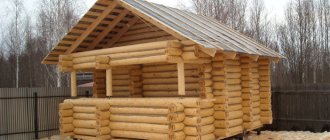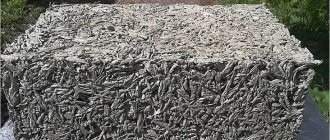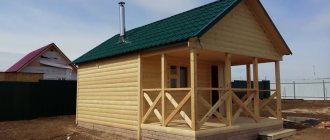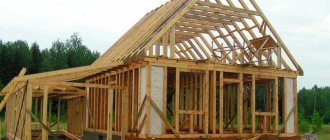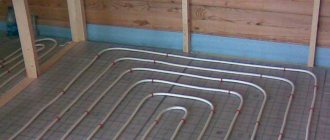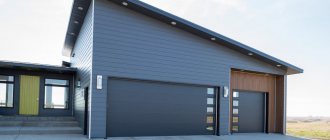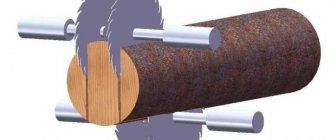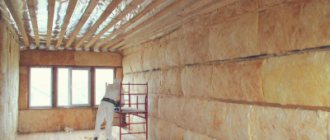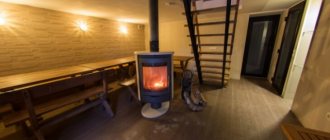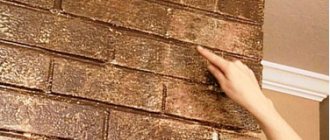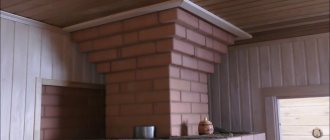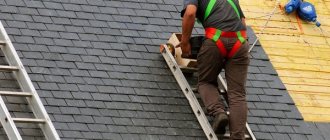Wood Species for Bathroom Finishing with Lining
The raw material for the production of lining is literally any type of wood. In Russia, the main materials used to make lining are: pine, spruce, larch, alder and linden. Of these, only alder and linden are suitable for finishing a bathhouse with clapboards.
Of the tree species growing in Russia, the most popular Bath species are: aspen, linden, and alder. Over the past 8-12 years, decorative wood species such as Canadian red cedar, Canadian hemlock and abash have appeared on the Russian market. Canadian cedar and hemlock grow and are imported naturally from Canada, and abash from Africa.
There is also an imitation of African abash on the market, which has taken the name Asian abash, but in fact, the real name of this type of tree is Paulownia (lat. Paulownia). This is a fast-growing tree that is grown on plantations on an industrial scale.
Well, a completely new valuable breed for the bathhouse is the exotic Meranti (also called Bukit). Meranti grows mainly in Malaysia and Indonesia. Meranti is a resinless rock with a light pink tint, natural shine, medium density and geometric stability.
The type of wood for finishing a bathhouse with clapboards, quite a lot. It remains to determine what you like best and suits your taste and budget. To help with this important decision, take a look at our Wood Comparison for Pairs page. Here you will find more detailed information about each breed and type of sauna lining.
Advantages and disadvantages
Before we talk about the pros and cons, let's first understand a little about whether cedar pine different from ordinary pine . Because they build bathhouses from pine, why does a cedar bathhouse suddenly turn out to be three times more expensive? Of course, this is influenced by prevalence - the common one is much more common, but is that all?
Let's first look at the table, which shows not only the density of different types of wood, but also the coefficients of their shrinkage and swelling.
Please note that beech and oak, considered one of the best species, decrease in size and swell in approximately the same way as Scots pine , and cedar pine has lower coefficients (and therefore changes dimensions less when moistened and dried) than all of the above.
This can already be considered a scientifically proven advantage, because in a bathhouse where there is high humidity, the wood that has the lowest shrinkage and swelling coefficients (which is also important when choosing material for doors and windows). And if you compare all the species listed in the table, then cedar pine generally has the best performance in these columns.
As for the color and smell, we believe that they cannot be listed among the advantages, because some people like one thing, others like another. Aesthetic characteristics are generally subjective.
Photo: Stroylider company
For those who have to work with wood, the advantage will be that cedar is very easy to process , which, given its density, is, in general, not surprising. It's difficult to work with larch. But ordinary pine is also quite pleasant to process.
What else is important for a bathhouse, or rather, only for a steam room? Resinousness. Everyone knows that ordinary pine releases a lot of resin when the temperature rises - in the sun or in a steam room. But in many regions of Russia, cedar belongs to the premium category of wood, about which they do not say that you will burn yourself on the resin and then also wash off sticky stains with alcohol.
We would venture to assume that although cedar is a coniferous species, its use in a bathhouse also requires some kind of pre-treatment, which is called “ resin distillation .” In the end, its reserves in a felled tree are not unlimited, and you can try to expel as much resin as possible before it reaches the consumer. !Two articles are devoted to the treatment of wood using impregnations and antiseptics, about painting here.
IMPORTANT! But the sellers unanimously say that although cedar is resinous, this resin does not release to the surface. Shall we take his word for it? If you have something to say from personal experience, please write it in the comments below.
In general, the resinousness of conifers in a bathhouse is a disadvantage. Although even in the washing room you can freely make finishing from these rocks. Not to mention the rest room or dressing room. That is, it is better not to use them in the steam room.
Thus, assessing the pros and cons of a cedar bathhouse, we come to the conclusion that, provided that the resin is distilled, cedar pine has more advantages than ordinary pine, and it will give other species a head start. Therefore, we will balance everything with a minus, saying that the price makes such wonderful wood inaccessible. However, you can think about finishing the bathhouse with cedar lining - it will be cheaper than a bathhouse made of cedar logs.
Photo: Cedar Master
Why Lining for Baths
Lining is the final product of woodworking, intended not only for finishing baths and saunas, but also for walls, facades, interior decoration, country houses, cottages, loggias, balconies and much more, as your imagination allows. They say...the board got its name “lining” back in tsarist times, when “tongue-and-groove” boards were used for lining freight cars.
Today, the word “lining” does not cause misunderstanding for anyone. Everyone immediately understands what we are talking about, i.e. This is a wooden plank planed in a certain way, having a tenon on one side and a groove on the other. This is done to fasten the planks together, which provides a reliable, solid connection with quick and easy installation. Therefore, with the existing abundance of finishing materials, for example; engineered boards, various panels - “Lined”, due to its practicality and ease of installation, remains unrivaled.
How is this type of wood used?
Undoubtedly, cedar is used to sheathe baths and other premises, for the production of lumber, covering several industries at once, for the construction of cedar houses by sawing trees into beams and their subsequent installation into a single structure. And that's not all, you can also make high-quality furniture from cedar.
Lining Profiles for Baths
It is not difficult to produce lining of any size and profile using modern equipment. The profile will depend on the pattern of the cutter installed on the machine. In fact, you can put a cutter of any profile on the machine and get a new profile. However, certain profiles have established themselves on the market, which imitate, for example, a log or timber. That’s what they are called – imitation timber, blockhouse, etc.
The lining differs in thickness and width. Thin lining is mainly used for interior decoration, wide lining for facades. Since the lining has a “tenon” and a “groove”, to correctly calculate the amount of material, it must be taken into account that it has a “total” width and a “working” width.
Our company has a wide range of linings for baths made of decorative wood: hemlock, Canadian cedar, meranti, abasha, alder, linden and aspen. Wide and narrow profiles of lining for baths are different:
- Imitation of timber
- Block house
- Collective farmer
- Eurolining “classic” - has a standard sharp profile familiar to everyone
- Eurolining "softline" - like classic, but has a rounded profile
- Softline style - rounded profile
- Calm micro-groove (chamfered by 1mm)
- Calm mini-groove (chamfer removed by 2-3mm)
- Parquet lining – Wall/ceiling parquet with micro-groove
At the moment, only in ours you can buy lining for baths made of Canadian red cedar, which has a micro tenon/groove on all 4 sides of the die. The material is assembled like parquet and with virtually no waste!
Why is cedar so widely used?
It's all about its special properties, which allow it to solve any technological problems. This is a fairly durable wood species, known for its antibacterial qualities, which improve the functioning of internal human systems, in particular the immune system. Cedar wood is resistant to rotting, does not promote the proliferation of insects, is not susceptible to the formation of fungus, and is not susceptible to precipitation.
If we compare cedar with other trees of similar coniferous species, it contains the least amount of resins. There is a rational explanation for this: due to the presence of short fibers that make up the structure of the tree, they have nowhere to accumulate. In addition, the material is equally well polished and processed in other ways. If you need to do something with your own hands, cedar is simply irreplaceable.
Regarding cedar lumber, they say that their production cycle is minimal, because the product dries very quickly. This also applies to lining. It is believed that cedar can even be compared to metal in strength, which makes it possible to use it for various purposes.
How to Correctly Install Lining for a Bath
Several methods of laying lining for baths are used:
- vertical
- horizontal
- beveled
- mixed combination, for design solutions
With the vertical method, more intense moisture removal occurs. The horizontal method of installing the lining allows you to easily replace the lowest boards, which are more exposed to dampness and moisture. The beveled type of installation, although more labor-intensive, adds an effect of exclusivity when installing bathhouse lining. Which method to choose is up to you.
The installation of lathing is necessary for insulating a bathhouse or sauna and for the proper operation of the bathhouse lining, and also allows you to establish proper heat exchange in the steam room. Installation of the bathhouse lining is carried out on the sheathing. We will describe the installation sequence step by step:
- Step 1. The walls are covered with a moisture-permeable membrane.
- Step 2. The sheathing is installed. The lathing is made from bars.
- Step 3. The insulation is laid.
- Step 4. The insulation is covered with a moisture-proof membrane.
- Step 5. Heat-reflecting foil is attached to the insulation.
- Step 6. A counter-lattice is, in turn, placed on the foil.
- Step 7. The bathhouse lining is attached to the counter-lattice.
Installation is complete!
What is good about cedar lining, how to distinguish it from ordinary one, and why is it not afraid of wood-boring beetles?
At first glance, cedar lining does not strike the imagination. It has average strength, hardness, wear resistance, etc. But it is quite expensive, and it is surprisingly easy to breathe in a room covered with such a board. Where does this healthy spirit come from?
Cedar is a coniferous tree that “prefers” to grow in places with a healthy ecology, for example, in the South Caucasus or in the forests of Siberia. It is not surprising that it is classified as a slowly but still disappearing species. Its felling is strictly limited, and loggers often have to deliver wood from distant, inaccessible places. Why all this trouble?
Before answering this question, let's consider the main characteristics of cedar wood.
Strength.
Cedar does not resist mechanical stress very well. Compressive strength varies from 33 to 40.6 MPa, flexural strength - from 54.1 to 79.9 MPa. For comparison: for oak these figures reach 57.5 MPa and 107.5 MPa, respectively.
Density.
The density of cedar wood, depending on humidity, is 410–435 kg/m³. According to this characteristic, it is similar to pine and spruce.
Weight.
A cubic meter of cedar wood, depending on the type, humidity and other factors, can weigh from 360 to 570 kg/m³.
Hardness.
Cedar belongs to the softwood category, just like spruce and fir. Its hardness is 4 HB. Its ability to hold fastenings is 15-20% worse than that of pine.
So, the technical characteristics of cedar are not particularly impressive. So why is this average wood in all respects so popular? The answer lies in its unique chemical composition.
Antiseptic properties of cedar
Stories have been told about the healing effects of cedar for thousands of years. One of them says that King Solomon built a temple from this very tree, so that the very air inside would heal the suffering and prolong their life. And like any legend, there is some truth here. Cedar resin contains phytoncides - volatile biologically active substances that kill bacteria, microscopic fungi and other harmful microorganisms. Simply put, cedar is a natural antiseptic that keeps the air in your home clean and healthy.
Another advantage of the high resin content is that cedar wood successfully resists rotting and attacks by wood-boring insects. The amazing, incomparable aroma that lasts for many years deserves special mention. By the way, this is why cedar is actively used for the production of phyto-barrels.
Cedar, unlike pine, has short fibers. Thanks to this, end cracks do not appear even on thin boards
Resin (resin), which gives cedar a pleasant smell, provides another useful property - immunity to moisture and sudden temperature changes. Therefore, clapboards made from this noble wood are used to cover the walls of baths and saunas. It is in the hot air that the healing properties of cedar are fully revealed. It warms up quickly and retains heat for a long time, creating the atmosphere of a coniferous forest in the steam room.
Saunas lined with cedar planks
Due to the high resin content, cedar lining does not ignite well and “reluctantly” supports combustion
However, the resinousness of cedar can cause quite fair concerns. Will the board leak from the heat of the steam room? A small amount of resin will not only not harm, but on the contrary, will improve the atmosphere of the steam room. But too “weeping” lining will really create problems. This situation may arise if the manufacturer was in a hurry and put an under-dried board on the market. And the only way to protect yourself is to buy lumber only from trusted companies.
Of course, the scope of cedar is not limited to baths and saunas. Lining made from this wood can be used anywhere - from the kitchen and children's room to the bedroom. By the way, sleep in the aroma of a coniferous forest will be calm and sound.
Continuing the theme of interior decoration, we note that it is better not to get carried away by covering the entire room with cedar from floor to ceiling. First of all, because the smell will be too intense, but there is another reason.
Cedar lining has a rather unique appearance. Initially it has a yellow or light brown color, which darkens over time, acquiring a reddish tint. It looks noble and stylish, but if there is too much of this type of decoration in the room, it will become intrusive and create a feeling of stuffiness. However, this is a matter of taste and personal preference.
Is it possible to stop the darkening of cedar?
No, over time all wood changes color. This is the nature of this material. And this is not considered a disadvantage; moreover, “noble gray hair” is a symbol of respectability for many.
Processing and cost
Considering the unique healing properties of cedar, it is not customary to coat it with varnish or paint, because this will “suffocate” the wood and will not allow it to effectively evaporate aromatic substances. Sometimes the board is impregnated with oil and wax, but most prefer to leave it in its original form. And this imposes certain restrictions on installers. You should work with gloves, avoiding the slightest contamination, because over time they will appear in the form of stains.
As for the shapes and sizes of cedar lining, they are no different from other types of lining. All requirements for lumber of this kind are set out in detail in GOST 8486-86 and GOST 24454-80. For example, the “Extra” class should not have knots, cracks, fungal infections or any other defects.
In addition to the standard state classification by grade, there is also a division by type of board used by lumber producers and sellers.
Softline
(Soft line, translated as a smooth line). Board with a rounded chamfer. When sheathing, the assembled lamellas form a surface without sharp edges. This type of lining is optimal for covering a steam room.
Types of boards
“Calm” (“Peasant Woman”, “Collective Farm Woman”)
assumes a low chamfer height or its complete absence. Thanks to this, when joining the boards, a smooth surface is formed without pronounced seams. Width varies from 90 to 150 mm, thickness - from 12 to 25 mm.
"Block house"
— a board up to 25 mm thick with a semicircular profile, imitating a rounded log.
"American"
— lining with a wedge-shaped profile. When joined, it forms a ribbed surface, like classic American siding
Imitation of timber
— the chamfers are cut in such a way that the plank cladding looks like a wall assembled from timber.
Eurolining
- a board with an elongated tenon and two longitudinal grooves on the back side, which serve to ventilate the space under the skin.
"Landhouse"
- a board with an embossed or milled pattern on the front side.
"Wave"
— as the name suggests, the profile of the lining has a wavy surface.
"Taiga"
- a type of lining 6-9.5 cm wide.
"Finka"
— the front surface of the board has the shape of a beam with rounded edges.
Double-sided
— lining, polished on both sides. Designed for the construction of thin partitions.
The thickness of the lining can vary from 1.2 to 4 cm, width - from 7.5 to 20 cm, and length - from 20 to 600 cm
Of course, we cannot help but touch upon the financial issue. Cedar lining is not a cheap material. And this is not surprising, given the strict logging restrictions, the difficulties of delivery from remote regions where this environmentally sensitive tree grows, and a number of other factors. The cost of 1 m² as of April 2020 averages 750-1800 rubles.
How not to make a mistake with your choice?
Cedar lining “Calm” grade AB
Obviously, the purchase of elite lumber should be taken seriously. There is a possibility that an unscrupulous seller will try to pass off cheaper wood as cedar. First of all, you need to pay attention to the color - pinkish-yellow or light brown
, as we said above.
But you shouldn't rely on this alone. The shade of a tree depends on many factors - place of growth, lighting, chemical composition of the soil, etc. But what is almost impossible to go wrong with is the smell. When going for clapboard, you should take a small piece of cedar wood with you and compare the aromas when purchasing.
Cedar is a fairly soft wood. If you run a coin along the end of the board, a shallow dent should appear on it.
It is generally accepted that the fewer knots there are on a board, the better it is. And this opinion is absolutely fair, but... not in the case of cedar. On a lining made from it, a couple of live, spliced knots will not be superfluous. After all, it is around them that the resin accumulates, which gives the wood its amazing aroma.
But if knots are not a serious problem, then the requirements for geometry remain high. When purchasing cedar lining, it makes sense to inspect each board. All of them must be smoothly sanded and have right angles and clear edges. Cracks, chips and stains are unacceptable.
When loading, it is necessary to ensure that the lumber is hermetically packed in plastic film. It is advisable to fold the packs so that they do not rub against each other. Let us remember that cedar is quite soft wood, and it can be damaged during transportation.
The boards should be stored in a dry, well-ventilated area. And it’s better not to use them before installation, so as not to waste the precious aroma.
Fasteners for Lining in Bathhouse
When installing sauna lining, various fasteners are used:
- These are traditional nails (to avoid rust marks on the surface of the lining, galvanized, stainless or copper nails are used)
- Clamps are a modern type of fastening of lining for a bathhouse. Allows the installation of lining without compromising the integrity of the surface. Supplied in boxes numbered from 1 to 5, depending on the thickness of the mounted lining.
- The staples are made from a pneumatic gun. A neat, efficient and fastest way to attach sauna lining.
Pine
Pine is a good building material, but it is inferior in durability and durability to larch and cedar. It is quite durable and, if you do not plan to steam in the cold season, you will not freeze in a pine bathhouse. In addition, pine is the most affordable, so very often inexpensive baths are made from pine.
Benefits of pine wood
- Price - pine baths are the most inexpensive
- Strength
- Ease of processing
However, unlike cedar and larch, pine must be treated with antiseptic agents, because it is susceptible to rotting. The upper layers of wood are softer, able to absorb moisture and are especially susceptible to “blueing” of the fabric. Such a bathhouse will not last you long, but as an option for an inexpensive summer bathhouse for 5-7 years, it is quite functional.
Disadvantages of pine wood
- Fragility
- High thermal conductivity - pine baths are “cold” and quickly release heat. You can't steam in winter
- The need for additional treatment with antiseptic compounds
If you plan to steam in a sauna both in winter and summer, then cedar is more suitable. The sauna will serve for a long time, reliably and will help improve the health of the body.
List of Linings for Baths and Saunas
- Buy eurolining for a bathhouse made of Canadian cedar
- Buy lining for a bathhouse made of Canadian cedar
- Buy imitation timber for a bathhouse made of Canadian cedar
- Buy wall parquet for a bathhouse made of Canadian cedar
- Buy sauna lining from meranti
- Buy hemlock sauna lining
- Buy sauna lining made of black alder
- Buy sauna lining from African abash
- Buy linden sauna lining
- Buy aspen lining for a bathhouse
We invite you to our showroom and warehouse at the address: Warsaw highway, 28Zh. Here you can not only buy lining for a bathhouse, but also look, touch, feel and feel the pleasant smell of wood, each of them, before you make your important choice. Enjoy Your Bath!
Cedar and its medicinal properties
There is no doubt that the composition of cedar is unique: the resin is used to make an ointment that can tighten wounds, the needles help prevent and treat asthma, and the kernels of cedar nuts help cope with tuberculosis. In general, cedar treats the entire range of diseases of the respiratory and cardiovascular systems, including liver and kidney diseases, neuroses, sclerosis and gout.
You can use cedar in various ways, but the most effective and at the same time pleasant way is to get into a bathhouse lined with this material.
What you need to know about the disadvantages of mahogany
Any natural materials, including cedar wood, have negative qualities.
The most sensitive disadvantages include the low hardness and wear resistance of mahogany. It can be easily cut in almost any direction; the lining of the walls and floor of the bathhouse does not produce splinters or splinters.
But, on the other hand, the supporting surface, for example, stair steps, shelves, ladders, floor gratings, are quickly wiped off by the soles of shoes. For vertical surfaces this is not critical, but in the case of supporting surfaces everything is much more complicated - wear can lead to premature failure of the step, a fall, and injury.
The second disadvantage is the increased resin content. Firstly, ether-resin substances are highly active, so they easily oxidize metal things, from bronze taps to steel nails and screws screwed into the lining.
Secondly, the volatile substances and essential oils themselves are harmless in a bathhouse, but upon contact with the hot surface of a heater or chimney they turn into tar, and therefore intensively pollute the stove fittings.
